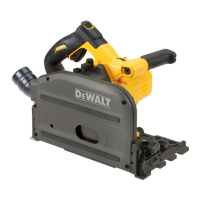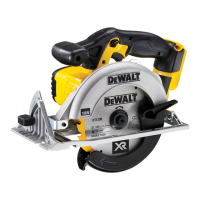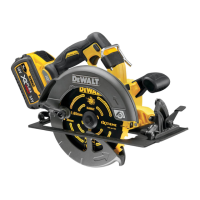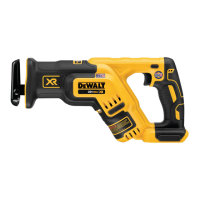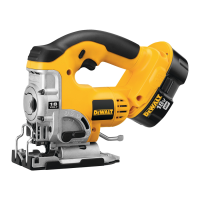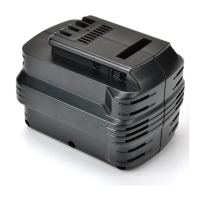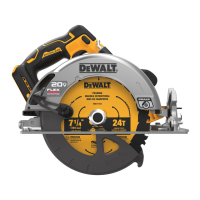39
ENGLISH
• This product is not intended for use by persons (including
children) suffering from diminished physical, sensory or
mental abilities; lack of experience, knowledge or skills
unless they are supervised by a person responsible for their
safety. Children should never be left alone with thisproduct.
ASSEMBLY AND ADJUSTMENTS
WARNING: To reduce the risk of serious personal
injury, turn tool off and disconnect battery pack
before making any adjustments or removing/
installing attachments or accessories. An accidental
start-up can causeinjury.
WARNING: Use only
battery packs andchargers.
Inserting and Removing the Battery Pack
from the Tool (Fig. A)
NOTE: Make sure your battery pack
14
is fullycharged.
To Install the Battery Pack into the Tool
1. Align the battery pack
14
with the rails as shown in
FigureA.
2. Slide it in until the battery pack is firmly seated in the tool
and ensure that you hear it snap intoplace.
To Remove the Battery Pack from the Tool
1. Press the release button
15
and firmly pull the battery
packout.
2. Insert battery pack into the charger as described in the
charger section of thismanual.
Fuel Gauge Battery Packs (Fig. A)
Some
battery packs include a fuel gauge which consists
of three green LED lights that indicate the level of charge
remaining in the batterypack.
To actuate the fuel gauge, press and hold the fuel gauge
button
20
. A combination of the three green LED lights will
illuminate designating the level of charge left. When the level
of charge in the battery is below the usable limit, the fuel gauge
will not illuminate and the battery will need to berecharged.
NOTE: The fuel gauge is only an indication of the charge left on
the battery pack. It does not indicate tool functionality and is
subject to variation based on product components, temperature
and end-userapplication.
Bevel Adjustment (Fig.A)
The bevel angle can be adjusted between 0° and 47°.
1. Loosen the bevel adjustment knobs
7
.
2. Set the bevel angle by tilting the saw shoe
4
until the mark
indicates the desired angle on the bevel scale
6
.
3. Tighten the bevel adjustment knobs
7
.
Changing the Saw Blade (Fig.A–C)
NOTE: It is not necessary to remove the outer blade cover
23
to change theblade.
1. Remove the batterypack.
2. Press the spindle lock button
12
.
3. Press the plunge saw down until it stops (blade
changeposition).
4. Turn the spindle lock lever
13
clockwise until itstops.
5. Hold the spindle lock lever
13
down and using the hex
wrench found in the front handle
11
, rotate the blade until
the lock position isfound.
NOTE: The blade
10
is now locked and cannot be turned
byhand.
6. Use the hex wrench to turn the blade clamping screw
24
counterclockwise toremove.
7. Remove the outer flange
25
and used blade
10
. Place the
new blade on the inner flange
26
.
8. Replace the outer flange
25
and blade clamping screw
24
.
Turn the screw clockwise byhand.
NOTE: The direction of rotation of the saw blade and the
rotation of the plunge saw MUST be thesame.
9. Tighten the blade clamping screw firmly using the
hexwrench.
10. Release and turn the spindle lock lever
13
counterclockwise
until itstops.
11. Move the plunge saw back to topposition.
12. Push the plunge trigger
1
forward, to take the saw out of
blade changemode.
Adjusting the Riving Knife (Fig.A–C)
For the correct adjustment of the riving knife
21
, refer to
FigureC. Adjust the clearance of the riving knife after changing
the saw blade or whenevernecessary.
1. Follow Changing the Saw Blade steps 1–5.
2. Loosen the riving knife adjustment screw
22
with a hex
wrench and set the riving knife as shown in FigureC.
3. Tighten the riving knife adjustment screw
22
.
4. Turn the spindle lock lever
13
counterclockwise until
itstops.
5. Move the plunge saw back to topposition.
6. Push the plunge trigger
1
forward, to take the saw out of
blade changemode.
Depth of Cut Adjustment (Fig.D)
The cutting depth can be set at 0–59 mm without guide rail
attached; with the guide rail attached: 0–55mm.
1. Loosen the depth adjustment knob
8
and move the
pointer to obtain the correct depth ofcut.
2. Tighten the depth adjustment knob
8
.
NOTE: For optimal results, allow the saw blade to protrude from
the workpiece by about 3 mm (Fig.D).
If this logo appears on your tool, your tool is
equipped with Wireless Tool Control.
Wireless Tool Control (Fig.A)
(Available on some units)
CAUTION: Read all safety warnings, instruction and
specifications of the appliance which is paired with
thistool.
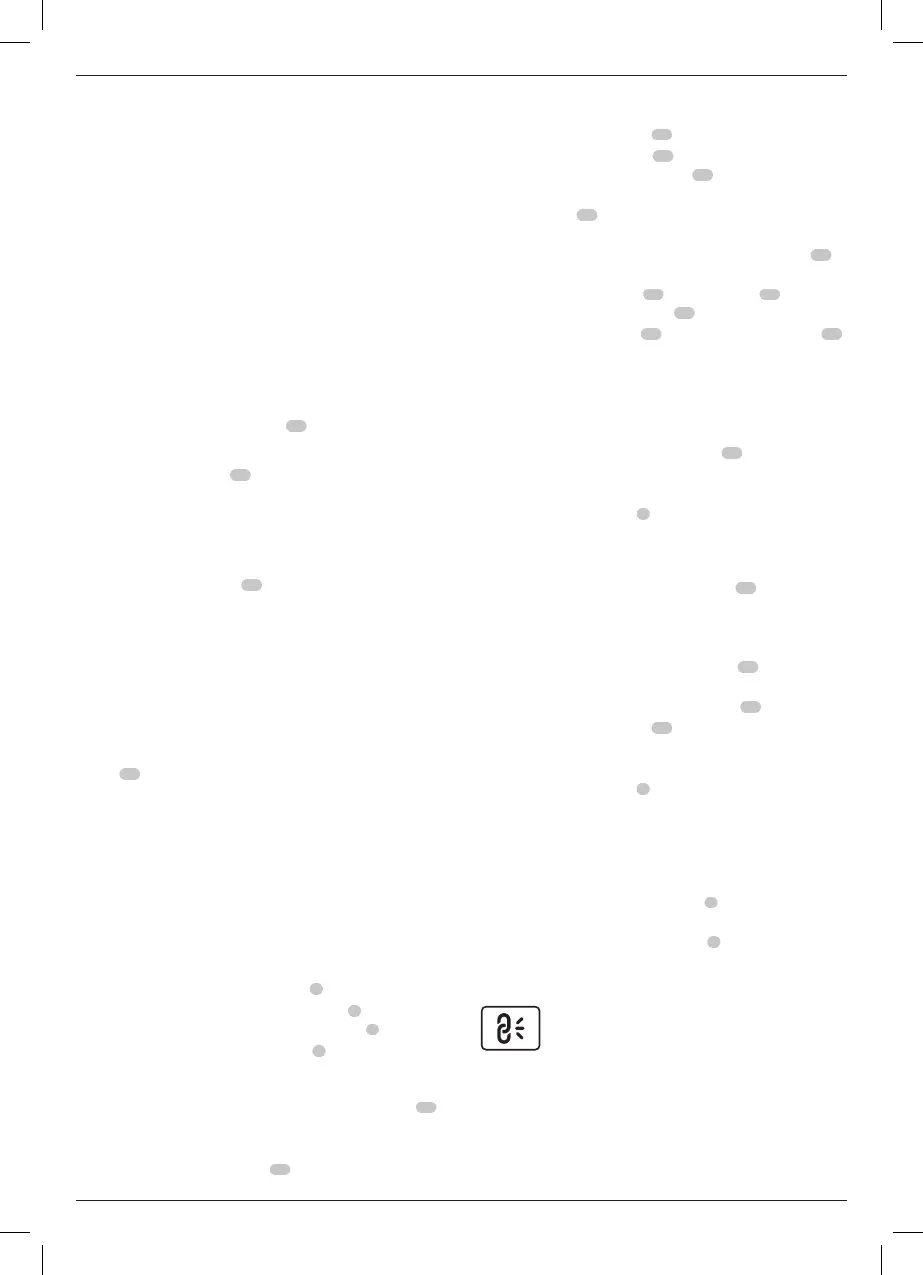